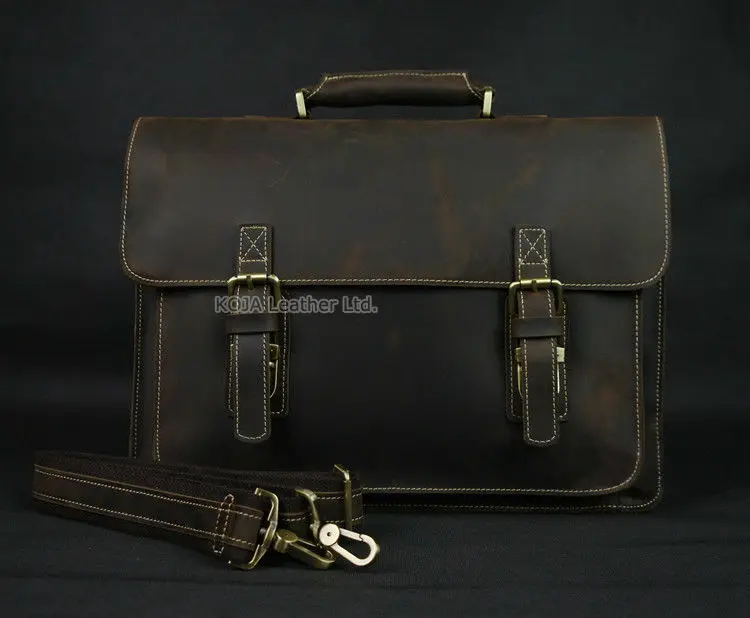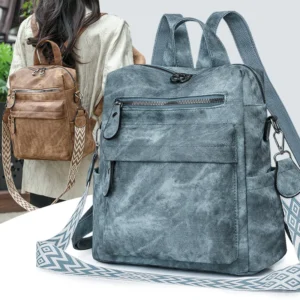Introduction to Vegetable-Tanned Leather: Nature’s Timeless Craft
In a world of mass-produced synthetic materials, vegetable-tanned leather stands apart as a testament to time-honored craftsmanship. This remarkable material is created through one of the oldest leather processing methods known to humanity, using natural tannins extracted from plant materials such as tree bark, leaves, and fruits to transform raw animal hides into durable, beautiful leather.
Unlike chrome tanning—which relies on chromium sulfate and other chemicals to quickly process leather—vegetable tanning harnesses the power of nature. This traditional method creates a fundamentally different material that develops unique character over time rather than deteriorating.
What is vegetable tanning? A natural leather processing method that uses tannins extracted from plant materials like tree bark, leaves, and fruits to convert raw animal hides into durable leather without synthetic chemicals. This process typically takes weeks or months compared to the days required for chrome tanning.
Archaeological evidence shows vegetable tanning techniques dating back thousands of years, with examples found in ancient Egyptian, Roman, and Chinese civilizations. Even today, traditional tanneries in regions like Tuscany, Italy continue to practice methods that have changed little over centuries. While vegetable tanning represents less than 10% of global leather production today, it remains the gold standard for premium leather goods that value quality over quantity.
Understanding the sourcing process of vegetable-tanned leather is essential for anyone interested in leather conditioning and waterproofing practices, as well as those who appreciate the ethics, sustainability, and timeless quality behind premium leather products.
What Makes Vegetable-Tanned Leather Exceptional?
Vegetable-tanned leather possesses characteristics that set it apart from other leather types, making it the material of choice for premium products designed to last generations. The unique properties of this leather stem directly from its natural production process.
The most remarkable quality of vegetable-tanned leather is how it evolves over time. Unlike chrome-tanned leather that typically looks the same years after purchase, vegetable-tanned leather develops a rich patina—a natural luster and darkening that makes each piece uniquely beautiful and tells the story of its use. This natural aging process creates what many leather enthusiasts consider the soul of the product.
Other exceptional qualities include:
- Extraordinary durability – With proper conditioning of leather backpacks, vegetable-tanned leather can last decades or even generations
- Distinctive natural scent – A warm, earthy aroma compared to the chemical smell of conventionally tanned leathers
- Superior breathability – Natural fibers that allow moisture to escape rather than trapping it against the body
- Excellent structural integrity – Maintains its shape and provides support where needed
- Complete biodegradability – Will eventually return to nature at the end of its (very long) life
- Enhanced tooling capability – The leather accepts embossing, carving, and molding techniques
Heritage brands and artisanal workshops prize vegetable-tanned leather precisely because it ages gracefully. Many vintage leather backpacks showcase this beautiful evolution, with surfaces that become smoother, develop deeper color tones, and conform perfectly to their use over time.
The tactile experience of vegetable-tanned leather is also distinctive—initially firm but gradually softening with use while maintaining structure. This combination of suppleness and strength makes it ideal for items that must balance durability with comfort.
Raw Material Sourcing: The Origin Story of Quality Leather
The journey toward exceptional vegetable-tanned leather begins long before the tanning process itself. The quality of the raw hide fundamentally determines the potential of the finished leather, making careful sourcing an essential first step.
Quality vegetable-tanned leather production embraces ethical sourcing practices by using hides that are byproducts of the meat industry. This approach ensures that no animals are raised solely for their skins, reducing waste by utilizing materials that might otherwise be discarded. According to industry estimates, over 99% of hides used in quality leather production come from animals raised for food.
The living conditions of the animals significantly impact hide quality. Cattle raised in open pastures with room to move freely develop stronger, more uniform hides with fewer defects than those raised in confined spaces. Their diet, access to clean water, and overall welfare directly influence the structural integrity of their skin.
When selecting hides, master tanners examine several crucial factors:
- Absence of parasitic damage like warble fly marks
- Minimal scarring from injuries or branding
- Consistent thickness throughout the hide
- Proper fat content within the skin structure
- Clean edges without excessive damage from removal
Once selected, hides undergo immediate preservation, typically through salting (curing), to prevent decomposition. Traditional methods involve covering fresh hides with salt to draw out moisture and inhibit bacterial growth, while modern operations may use controlled refrigeration followed by precise salt application.
The regional origin of hides creates natural variations in leather characteristics. For example, hides from highland cattle tend to be thicker with denser fiber structures than those from lowland regions—qualities that make them particularly suitable for full-grain leather backpacks and other products requiring exceptional durability.
Through careful sourcing practices that prioritize both quality and ethics, the foundation is laid for leather goods that not only look beautiful but also align with sustainable practices in leather production.
Tannin Harvesting: The Plant-Based Foundation
The distinctive character of vegetable-tanned leather comes directly from the plants that provide its tanning agents. These natural tannins—polyphenolic compounds found in various plant tissues—are the essential ingredients that transform raw hides into stable, durable leather.
Primary sources of vegetable tannins include:
- Tree barks – Oak (10-12% tannin content), chestnut (8-14%), mimosa (15-18%), and quebracho (20-25%)
- Tree woods – Particularly heartwoods rich in tannins like oak and chestnut
- Leaves – Sumac leaves (15-27% tannin content)
- Fruits – Myrobalans, valonea acorns, and tara pods
- Roots – Canaigre and various other plant roots
Each tannin source imparts unique characteristics to the leather. Italian tanners often prefer chestnut tannins for their warm reddish-brown color and water resistance, while Argentine quebracho produces a distinctive firmness and light color. These regional preferences have developed over centuries into specialized leather-making traditions.
Sustainable harvesting practices are crucial for the continued availability of these natural tannins. Traditional bark harvesting typically occurs during specific seasons when trees naturally shed their outer layers or after trees are harvested for other purposes. Modern operations often use bark from lumber industry byproducts or concentrate on plantation-grown tannin-rich species like mimosa and quebracho.
The chemical composition of these tannins—complex mixtures of polyphenols—gives them natural antimicrobial and preservative properties. These compounds bind with collagen proteins in animal hides, creating cross-linked structures that resist decomposition and provide vegetable-tanned leather with its characteristic stability.
Manufacturers seeking to ensure environmental responsibility should look for eco-friendly leather certifications that verify sustainable harvesting practices throughout their supply chain.
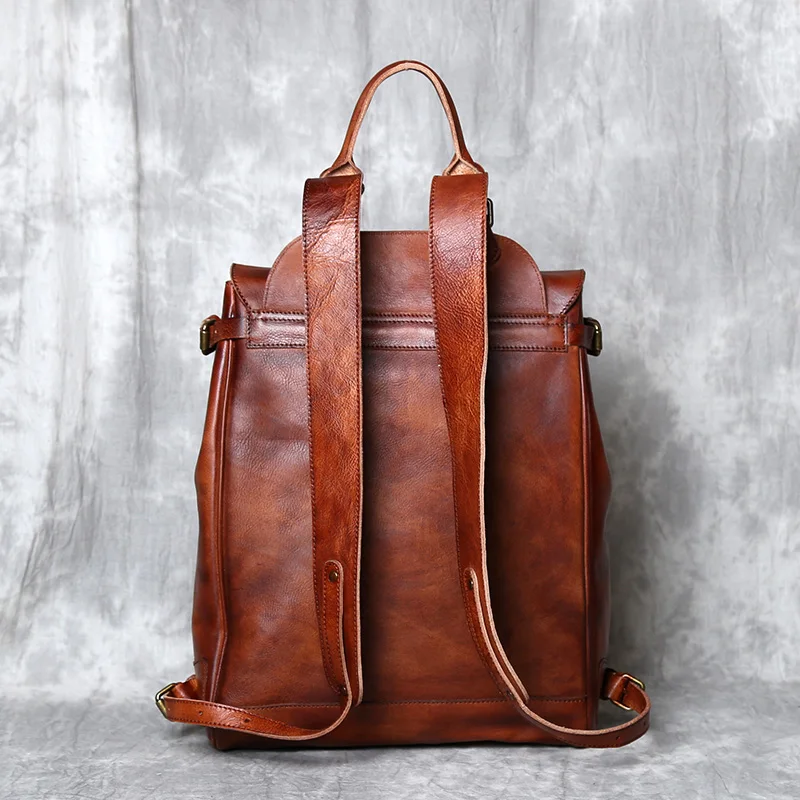
Pre-Tanning Preparation: Transforming Raw Hide into Canvas
Before the actual tanning process begins, raw hides must undergo extensive preparation to remove unwanted materials and create an optimal substrate for tannin absorption. This pre-tanning phase is meticulous and time-consuming but essential for quality results.
Soaking (24-72 hours): The preserved hides are first rehydrated in clean water, often in large drums or vats. This process removes salt, dirt, blood, and other soluble materials while restoring moisture to the fibers. Water quality is crucial during this phase—traditional tanneries often locate near pure water sources, while modern facilities carefully filter and test their water. The hides swell during soaking, opening fiber bundles for better cleaning.
Liming (3-10 days): Next, hides enter alkaline lime solutions that loosen hair roots and break down unwanted proteins. This critical step dissolves fats, removes hair, and opens the fiber structure to prepare for tannin penetration. Traditional tanneries use limestone-lined pits for this process, creating a gentle, gradual effect, while modern operations might use drums with carefully controlled lime solutions for more consistent results.
Fleshing: After liming, mechanical scraping removes remaining subcutaneous tissue and fat from the flesh side of the hide. Historically done by hand with curved knives, this process now often employs specialized machines, though premium leathers may still receive manual attention for precision.
Deliming and Bating (1-2 days): The alkalinity from liming must be neutralized before tanning can begin. Mild acids or ammonium salts gradually bring the pH back to neutral, while enzymes (traditionally from animal pancreas, now often synthetic) gently clean and soften the fiber structure, improving the leather’s eventual suppleness.
Each step in this preparation phase directly influences the final leather quality. Rushing these processes can result in incomplete cleaning, poor tannin penetration, or structural weakness. The extensive water usage in traditional methods—often 15-30 gallons per pound of hide—has led modern tanneries to develop recycling systems that can reduce consumption by up to 65% compared to historical practices.
The environmental impact of these pre-tanning steps varies significantly between traditional and modern approaches, with water conservation becoming increasingly important as highlighted in studies comparing environmental impact of leather alternatives.
The Vegetable Tanning Process: Nature’s Transformation
At the heart of creating exceptional leather lies the tanning process itself—the true transformation that converts prepared hides into durable, stable leather. This phase relies on the chemical interaction between natural tannins and the collagen protein structures within animal hides.
Traditional vegetable tanning employs two primary methods, each with distinct characteristics:
Pit Tanning (Traditional Method): Dating back thousands of years, this method involves a series of in-ground pits containing progressively stronger tannin solutions. Hides move through these pits over several months, starting in weak solutions (2-4% tannin concentration) and gradually progressing to stronger baths (12-15%). This patient approach allows for deep, uniform penetration without damaging the hide structure. The Tuscan region of Italy remains famous for these traditional pit tanneries, some using pits that have been in continuous operation for centuries.
Drum Tanning (Modern Method): Developed in the industrial era, drum tanning uses rotating wooden or stainless-steel drums to achieve more efficient tannin penetration. The mechanical action of the rotating drum helps work the tannins into the hide structure, reducing tanning time to 2-4 weeks. While faster, this method requires careful monitoring to ensure the mechanical action doesn’t damage the hides.
In both methods, a fascinating molecular dance occurs: plant tannins bind to the collagen proteins in the hide, creating complex cross-linked structures that resist decomposition and provide stability. This transformation is visible as the hides gradually change from a pale blue-white to progressively deeper shades of tan and brown as more tannins are absorbed.
Factors affecting tanning time include:
- Hide thickness (thicker hides require longer processing)
- Desired firmness (firmer leathers generally need longer tanning)
- End-use requirements (saddle leather needs different treatment than wallet leather)
- Water temperature and quality
- Tannin concentration and type
Premium leather used in luxury leather backpacks typically undergoes extended tanning periods to ensure complete penetration and superior durability. This patient approach allows the development of leather’s full potential—creating material that will serve faithfully for decades rather than years.
The vegetable tanning process demonstrates how traditional wisdom, combined with understanding of natural chemical processes, can create extraordinary materials that synthetic methods struggle to match.
Post-Tanning and Finishing: Crafting the Final Character
Once tanning is complete, the leather undergoes several crucial finishing processes that define its final appearance, feel, and performance characteristics. These steps transform the raw tanned material into the refined leather used in quality products.
Washing and Neutralizing: First, excess tannins are washed away, and the leather’s pH is carefully neutralized. This prevents potential irritation to users and prepares the leather for subsequent treatments. Traditional tanners use clean running water for this process, while modern facilities often employ specialized washing drums with recycled water systems.
Drying Methods:
* Air drying – The most traditional approach, allowing leather to dry naturally in controlled environments
* Toggle drying – Stretching leather on frames to maintain flat, uniform dimensions
* Vacuum drying – Modern method that removes moisture under controlled pressure
* Paste drying – Applying leather to smooth surfaces for flat, even results
Fatliquoring: Perhaps the most crucial post-tanning step, fatliquoring reintroduces oils and waxes to replace natural fats removed during preparation. This process determines the leather’s suppleness, water resistance, and feel. Traditional recipes include combinations of:
* Natural animal oils like neatsfoot oil
* Plant-based oils such as olive and coconut
* Natural waxes like beeswax and carnauba
* Fish oils for exceptional softness
Mechanical Treatments:
* Staking – Working the leather to create softness and flexibility
* Buffing – Smoothing the surface to create uniform texture
* Polishing – Enhancing natural sheen without artificial coatings
Finishing Touches: Unlike heavily finished chrome-tanned leathers, quality vegetable-tanned leather typically receives minimal surface treatment to preserve its natural characteristics. Light natural dyes might enhance color while allowing the leather’s natural markings to remain visible. Final protective treatments might include light applications of wax or natural oils.
The emphasis throughout these processes remains on enhancing rather than concealing the leather’s inherent qualities. This approach creates leather that will develop character through use rather than deteriorating—making DIY leather care for travel backpacks an important aspect of ownership.
Each finishing decision balances immediate appearance against long-term performance, with premium leather goods manufacturers prioritizing longevity and natural aging characteristics over perfect initial uniformity.
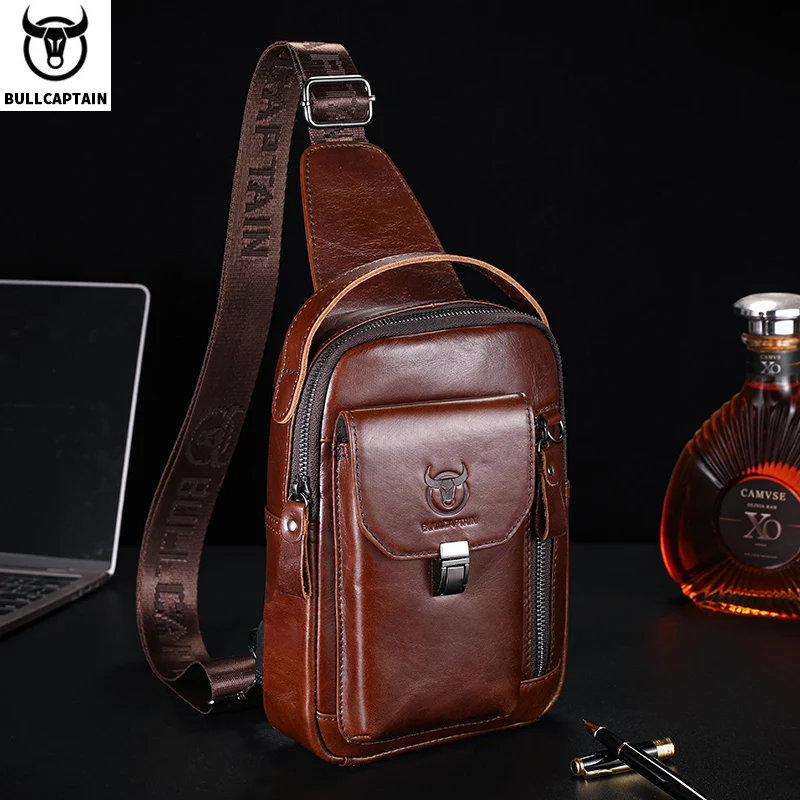
Environmental Impact: The Ecological Footprint of Vegetable Tanning
The environmental considerations of leather production have become increasingly important to conscious consumers. Vegetable tanning offers several significant ecological advantages compared to conventional chrome tanning processes, though it faces its own sustainability challenges.
Water usage represents one of the most significant environmental impacts in leather production. Traditional vegetable tanning typically requires 15-30 gallons of water per pound of leather produced—substantially more than chrome tanning. However, modern vegetable tanneries have implemented closed-loop water systems that can recycle up to 85% of process water, dramatically reducing consumption. These systems also enable better treatment of wastewater before release.
The biodegradability of tanning agents creates one of vegetable tanning’s clearest environmental benefits:
| Tanning Type | Biodegradability | Decomposition Time | End-of-life Considerations |
|---|---|---|---|
| Vegetable-tanned | Fully biodegradable | 50-100 years | Returns to nature, non-toxic |
| Chrome-tanned | Non-biodegradable | Indefinite | Potential chromium leaching |
Waste management practices in vegetable tanning have evolved to minimize environmental impact. Progressive tanneries transform solid waste into valuable byproducts:
* Leather dust becomes fertilizer components
* Leather scraps convert to compressed leather board
* Spent tannin solutions feed biogas digesters
Energy consumption presents another environmental consideration. Traditional pit tanning uses minimal energy but requires significant manual labor. Modern drum tanning consumes more electricity but has benefited from efficiency improvements like variable-speed motors and heat recovery systems that can reduce energy usage by 30-40%.
The carbon footprint of vegetable-tanned leather extends beyond the tannery to include raising livestock and transportation. However, when considering the material’s exceptional longevity—often decades compared to the months or years typical of synthetic alternatives—the lifetime environmental impact becomes more favorable.
Many brown leather backpacks and other products using vegetable-tanned leather emphasize these environmental benefits as part of their value proposition, appealing to consumers who prioritize sustainability alongside quality and aesthetics.
Traceability and Ethics in the Supply Chain
The ethical dimensions of vegetable-tanned leather production extend far beyond the environmental considerations, encompassing animal welfare, worker conditions, and cultural heritage preservation. For discerning consumers, understanding the complete supply chain has become increasingly important.
Traceability—the ability to follow leather from farm to finished product—provides the foundation for ethical leather sourcing. Truly transparent supply chains document:
- Origin of hides, including animal welfare standards
- Preservation and transport conditions
- Tannery practices and worker conditions
- All chemical inputs and processing methods
- Transportation and manufacturing steps
Worker welfare within traditional tanneries presents both challenges and opportunities. While artisanal tanneries often provide stable, skilled employment with fair wages, the physical demands and potential chemical exposures require careful management. Best practices include:
- Comprehensive safety training and equipment
- Regular health monitoring
- Limited exposure to dust and liquids
- Fair compensation reflecting skill level
- Preservation of traditional knowledge through apprenticeships
Animal welfare considerations begin with livestock raising practices and continue through humane slaughter methods. Ethical sourcing prioritizes:
- Animals raised primarily for meat (leather as byproduct)
- Free-range grazing practices where possible
- Humane transportation and handling
- Swift, stress-minimizing slaughter practices
The cultural heritage aspect of traditional leather production often goes overlooked but remains significant. Many tanning centers represent centuries of accumulated knowledge and regional identity. In places like Tuscany, Italy, and Fez, Morocco, traditional tanneries maintain techniques developed over generations while adapting to modern standards.
The economic impact of artisanal leather production can be substantial for small communities. Studies show that craft-focused leather production typically generates 5-7 times more local employment per unit than mass production, while keeping traditional skills alive.
Men’s leather backpacks and other products made with ethically sourced vegetable-tanned leather allow consumers to support these positive impacts while acquiring items of exceptional quality and character.
Certifications and Standards: Verifying Quality and Ethics
For consumers seeking assurance about the quality and ethical standards behind their vegetable-tanned leather purchases, several certification programs provide valuable guidance. These third-party verifications help distinguish genuine quality products from those making unsubstantiated claims.
Leather Working Group (LWG) offers the most comprehensive environmental audit protocol for tanneries worldwide. Their certification evaluates:
* Water and energy consumption
* Waste management practices
* Chemical management and restrictions
* Traceability of raw materials
* Environmental management systems
LWG awards ratings from Audited to Gold, with each level requiring progressively stricter environmental performance.
Genuine Italian Vegetable Tanned Leather Consortium certification guarantees:
* Traditional vegetable tanning methods
* Tuscan origin
* Absence of heavy metals and harmful substances
* Complete traceability
* Adherence to traditional craftsmanship standards
This specialized certification carries particular weight for premium leather goods, as Tuscan vegetable-tanned leather represents a gold standard in the industry.
EU Ecolabel for Footwear and Leather focuses on:
* Restricted substance compliance
* Air and water emission limits
* Waste reduction requirements
* Product durability standards
Other relevant certifications include ISO 14001 (environmental management), SA8000 (social accountability), and CITES (protection of endangered species).
While these certifications provide valuable guidance, they present certain limitations. Small artisanal producers may lack resources for formal certification despite following excellent practices. Additionally, certifications typically verify minimum standards rather than identifying exceptional quality.
Consumers should look for certification marks on products or packaging, though proper oiling leather doesn’t waterproof it completely, regardless of certification. The most reliable approach combines certification verification with direct questions to manufacturers about their sourcing and production methods.
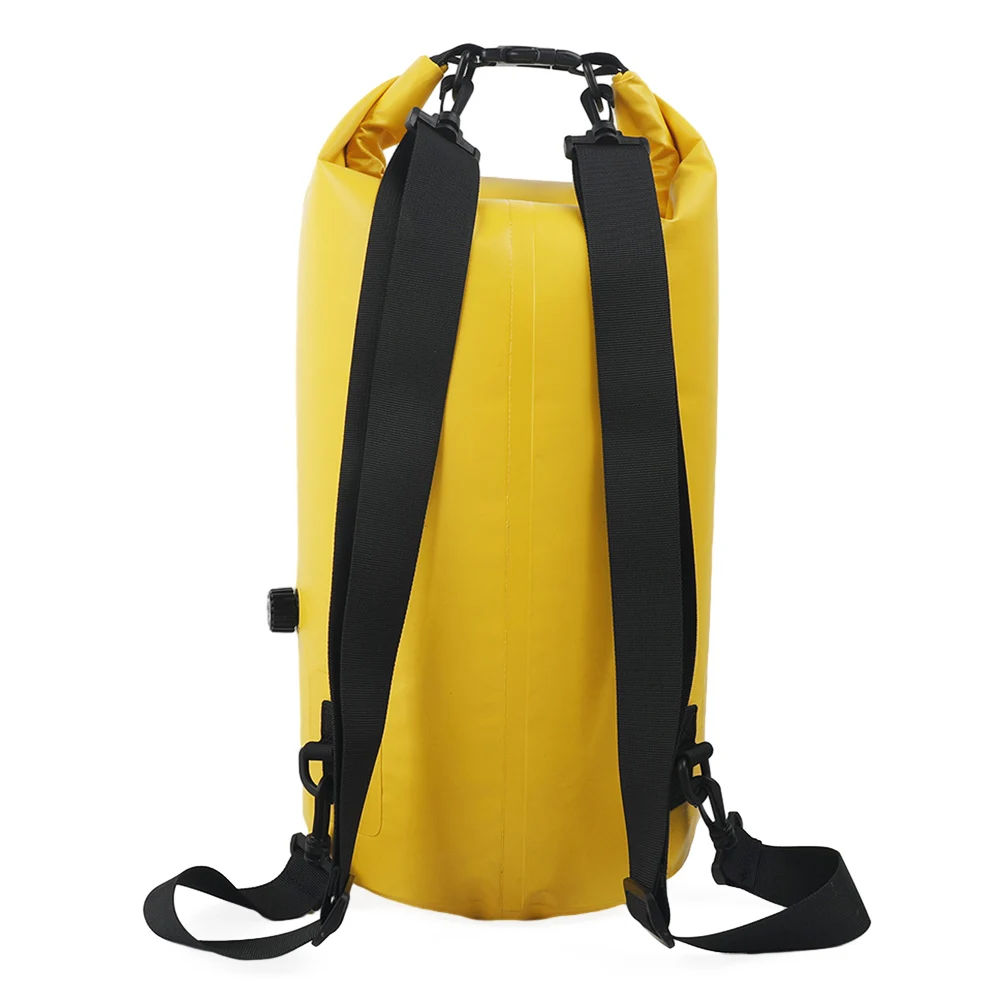
Selecting Quality Vegetable-Tanned Leather Products
Identifying truly exceptional vegetable-tanned leather products requires attention to specific characteristics that signal quality throughout the sourcing and production process. With these guidelines, consumers can make informed choices when investing in leather goods meant to last for decades.
Visual Assessment:
* Look for visible natural grain patterns and slight variations in color—perfectly uniform leather often indicates heavy finishing that masks natural character
* Edges should be properly finished—burnished, painted, or folded—not raw or roughly cut
* Cut edges should show consistent color throughout the thickness, indicating complete penetration of tannins
* The surface should be free of excessive wrinkles, scars, or thin spots, though some natural markings indicate authentic full-grain leather
Tactile Evaluation:
* Quality vegetable-tanned leather feels firm yet supple, not stiff or plastic-like
* The surface should have a smooth, warm feel that gradually warms to touch
* Gently bending the leather should create temporary creases that slowly disappear, not sharp breaks
* The material should have noticeable weight and substance appropriate for its optimal leather thickness for backpacks
Olfactory Assessment:
* Genuine vegetable-tanned leather has a distinctive natural smell—earthy and warm, never chemical or artificial
* The scent should be subtle rather than overwhelming
Construction Details:
* Stitching should use strong thread with even, tight stitches that pull slightly into the leather
* Hardware should be solid and securely attached, ideally with reinforcement at stress points
* Interior construction should show the same attention to detail as exterior surfaces
When evaluating price, remember that quality vegetable-tanned leather products represent significant investments in materials and craftsmanship. Products using genuine vegetable-tanned leather typically cost 3-5 times more than those using conventional leathers. This premium reflects not only material costs but also the additional time required for proper construction with this specialized material.
When purchasing, don’t hesitate to ask specific questions about:
* The origin of the leather
* The tanning methods used
* The construction techniques employed
* Expected aging characteristics
* Recommended care practices
Quality producers willingly provide this information, understanding that educated customers better appreciate the value of their products.
14 Inch Leather Laptop Backpack, Brown Leather Backpack, Men's Leather Backpack, Vintage Leather Backpack
Price range: $177.28 through $199.12 Select options This product has multiple variants. The options may be chosen on the product pageCarry On Leather Backpack, Roll Top Leather Backpack
Price range: $77.76 through $96.48 Select options This product has multiple variants. The options may be chosen on the product pageDesigner Mini Backpack, Mini Leather Backpack, Small Leather Sling Backpack, Women's Leather Backpack
Price range: $95.76 through $98.80 Select options This product has multiple variants. The options may be chosen on the product pageDesigner Mini Backpack, Designer Women's Backpack, Mini Leather Backpack, Women's Leather Backpack
Price range: $135.92 through $137.64 Select options This product has multiple variants. The options may be chosen on the product pageBlack Leather Backpack, Small Leather Backpack, Women's Leather Backpack
Price range: $112.96 through $116.12 Select options This product has multiple variants. The options may be chosen on the product page- Price range: $80.72 through $108.04 Select options This product has multiple variants. The options may be chosen on the product page
The Future of Vegetable-Tanned Leather: Tradition Meets Innovation
The art of vegetable tanning stands at a fascinating crossroads between honoring ancient traditions and embracing thoughtful innovations. This balance will shape how this remarkable material evolves in coming years.
Modern tanneries are developing water recycling systems that maintain the quality benefits of traditional methods while reducing environmental impact by up to 80%. These closed-loop systems represent significant progress toward sustainability without compromising leather quality.
Technology integration is enhancing traceability throughout the supply chain. Advanced tracking systems now follow hides from farm to finished product, documenting every process step. Some premium leather goods now include QR codes allowing customers to trace the complete journey of their specific item.
Consumer education continues to grow in importance as more people recognize the value distinction between genuine vegetable-tanned leather and mass-produced alternatives. Market research shows consistent growth in the premium leather segment, with consumers increasingly willing to invest more for products with authentic materials, transparent sourcing, and ethical production.
The growing maker movement has renewed interest in traditional leatherworking skills, with small-scale artisans creating innovative products using vegetable-tanned leather. This community emphasizes direct relationships between creators and customers, often highlighting specific tanneries and their unique characteristics.
Perhaps most encouraging is how traditional tanning centers are finding new relevance in a world increasingly concerned with sustainability and authenticity. Regions with centuries-old tanning traditions now position their heritage as an advantage rather than an obstacle to progress.
The leather backpacks and other items emerging from this renaissance combine the best of both worlds—materials processed through time-honored methods, designed with contemporary aesthetics, and constructed with modern precision. This synthesis creates products perfectly aligned with current desires for authenticity, quality, and responsibility.
Why Choose Vegetable-Tanned Leather for Lifetime Products?
Why invest significantly more in vegetable-tanned leather when cheaper alternatives abound? The answer lies in understanding value that transcends initial price.
Does vegetable-tanned leather really last longer than other types?
Yes, substantially. With proper care, quality vegetable-tanned leather items often remain functional and beautiful for decades, sometimes generations. The natural tannins create exceptional structural stability, while the material’s ability to be maintained and repaired extends its useful life far beyond alternatives.
How does the aging process differ from other leathers?
Unlike chrome-tanned leather that typically deteriorates with age, vegetable-tanned leather improves. The material develops a rich patina—a natural luster and character that reflects its use history. This transformation creates pieces that become more personal and valuable over time rather than wearing out.
Is the environmental benefit significant enough to justify the price?
When considering lifetime impact rather than production impact alone, yes. The exceptional longevity means fewer replacements and less overall resource consumption. A single quality vegetable-tanned leather item might replace five or more conventional alternatives over its lifetime.
What intangible benefits come with choosing vegetable-tanned leather?
Beyond practical considerations lie meaningful connections—to traditional craftsmanship, to natural materials, and to the concept of ownership that spans decades rather than seasons. These items develop character that reflects their owner’s journey, creating personal significance beyond functional value.
Choosing vegetable-tanned leather means rejecting disposable consumer culture in favor of objects made to matter. It represents investment in quality over quantity, in natural materials over synthetic alternatives, and in products designed to age beautifully rather than be replaced.
The marks, patina, and character that develop over years of use tell a story no new product can match—creating not just possessions but personal artifacts that carry meaning through time. This enduring quality, both physical and emotional, makes vegetable-tanned leather the natural choice for items meant to matter for a lifetime.

